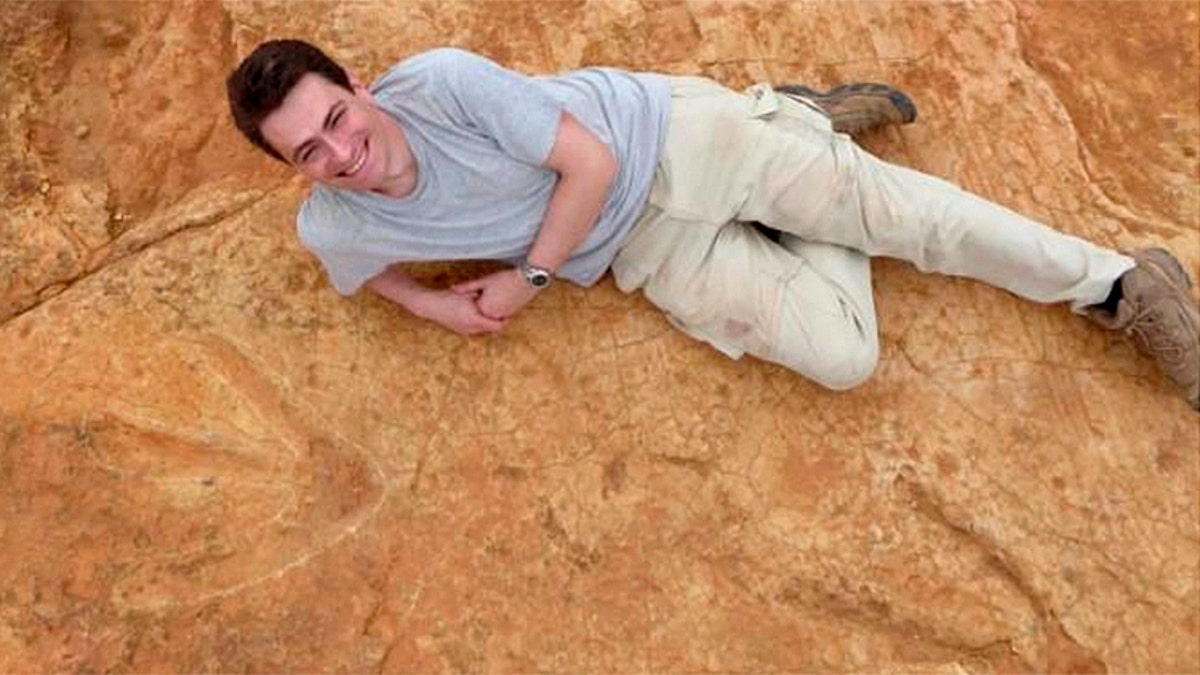
Fabien Knoll, Honorary Senior Research Fellow at the University of Manchester, lies next to the exceptionally large carnivorous dinosaur footprints found in Lesotho, Africa in this undated handout photo obtained by Reuters October 26, 2017. (Fabien Knoll/University of Manchester/Handout via REUTERS)
Tyrannosaurus rex has long been thought to be the "king of the dinosaurs," but after this latest discovery, T. rex may have some company.
Discovered in southern Africa, the new dinosaur, named Kayentapus ambrokholohali, was about 30 feet long and had three-toed feet that left footprints measuring nearly two feet long.
So far, no fossilized bones have been found, but the footprints reveal key details about the dinosaur, chiefly that it was a large theropod and part of the same group that included the aforementioned T. rex and Giganotosaurus.
150-MILLION-YEAR-OLD 'SEA MONSTER' UNEARTHED IN INDIA
“Our finding corroborates the hypothesis that theropods reached a great size relatively early in the course of their evolution, but apparently not before the Triassic-Jurassic boundary,” said paleontologist Fabien Knoll in an interview with Reuters.
“It is the first evidence of an extremely large meat-eating animal roaming a landscape otherwise dominated by a variety of herbivorous, omnivorous and much-smaller carnivorous dinosaurs,” paleontologist Lara Sciscio of the University of Cape Town in South Africa added in the interview.
Kayentapus lived early in the Jurassic Period, nearly 65 million years ago, just after a mass extinction. Kayentapus is thought to have lived on the super-continent Gondwana. Antarctica, South America, Africa, Madagascar and Australia were all once part of Gondwana.
"This new megatheropod trackway site marks the first occurrence of very large carnivorous dinosaurs (estimated body length >8–9 meters) in the Early Jurassic of southern Gondwana, an evolutionary strategy that was repeatedly pursued and amplified in the following ~135 million years, until the next major biotic crisis at the end-Cretaceous," the researchers wrote in the journal PLOS ONE.
Though no fossils have been found, additional footprints found in Poland indicate a similar-sized theropod inhabited the other super-continent of the time, Laurasia.
Follow Chris Ciaccia on Twitter @Chris_Ciaccia
